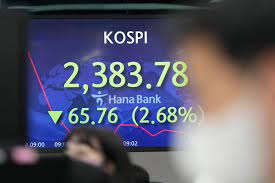Bangkok, Sept 15: Shares were mostly higher in Asia on Thursday after a wobbly day of trading yielded modest gains on Wall Street.
US futures inched up while oil prices were mixed.
Shanghai’s benchmark lost 1 per cent to 3,204.93 after China’s central bank left its benchmark lending rate unchanged. While other major economies are raising rates to cool inflation, China’s economy has been slowing and inflation remains moderate.
Tokyo’s Nikkei 225 index gained 0.5 per cent to 27,946.20. Japan reported a record trade deficit for the month of August, driven by high costs for imports of energy and other commodities and a weak yen.
But analysts said they expect a rebalancing in coming months.
“Motor vehicle production should continue to normalise as supply chain disruptions ease, while commodity price growth has eased even further,” Darren Tay of Capital Economics said in a commentary.
In Hong Kong, the Hang Seng index was 0.5 per cent higher, at 18,941.04, while the Kospi in Seoul edged 0.1 per cent higher to 2,413.07.
Australia’s S&P/ASX 200 added 0.6 per cent to 6,869.60.
Trading was tentative in New York on Wednesday, a day after the market’s worst drop in two years, which was set off by fears that higher interest rates could cause a recession.
A report on inflation at the wholesale level showed prices are still rising rapidly, with pressures building underneath the surface, even if overall inflation slowed. It echoed a report on inflation at the consumer level Tuesday, which raised expectations for interest-rate hikes and triggered a rout for markets.
The S&P 500 added 0.3 per cent Wednesday to 3,946.01, while the Dow inched 0.1 per cent higher, to 31,135.09. The Nasdaq gained 0.7 per cent to 11,719.68, and the Russell 2000 picked up 0.4 per cent to close at 1,838.46.
Traders now see a one-in-four chance the Fed may hike its benchmark rate by a full percentage point next week, quadruple the usual move, according to CME Group. A day earlier, it was closer to a one-in-three chance.
The site puts the probability of a three-quarter percentage point increase now at 76 per cent, up from 69 per cent on Tuesday.
The central bank has already raised its benchmark interest rate four times this year, with the last two increases by three-quarters of a percentage point.
The Fed is taking the aggressive action on interest rates to try and cool the hottest inflation in four decades.
Tuesday’s report on high prices jolted the market with signs that inflation is entering a more stubborn phase that could require an already resolute Fed to become more aggressive.
Wall Street is especially worried that the rate hikes could go too far in slowing the economy and send it into a recession. The Fed is trying to avoid that outcome, but the latest inflation reports suggest that is becoming a more difficult task.
The broader US economy has been slowing, but consumers have remained resilient and the job market remains strong. Wall Street will get another update on inflation’s latest impact on spending when the government releases its retail sales report for August on Thursday.
The market is also monitoring US-China tensions and war in Ukraine, while business and government officials are bracing for the possibility of a nationwide rail strike at the end of this week that could paralyze an already discombobulated supply chain.
The railroads have already started to curtail shipments of hazardous materials and have announced plans to stop hauling refrigerated products ahead of Friday’s strike deadline. Businesses that rely on Norfolk Southern, Union Pacific, BNSF, CSX, Kansas City Southern and other railroads to deliver their raw materials and finished products are planning for the worst.
Union Pacific fell 3.7 per cent and Norfolk Southern fell 2.2 per cent.
Biden administration officials are scrambling to develop a plan to keep goods moving if the railroads shut down. The White House is also pressuring the two sides to settle their differences, and a growing number of business groups are lobbying Congress to be prepared to intervene and block a strike if they can’t reach an agreement.
In other trading Thursday, US benchmark crude oil gained 10 cents to USD 88.58 per barrel in electronic trading on the New York Mercantile Exchange. It jumped USD 1.17 to USD 88.48 on Wednesday.
Brent crude, the pricing basis for international trading, slipped 5 cents to USD 94.05 per barrel.
The dollar rose to 143.42 Japanese yen from 143.16 yen late Wednesday. The euro weakened to 99.73 cents from 99.77 cents. (AP)
Trending Now
E-Paper


